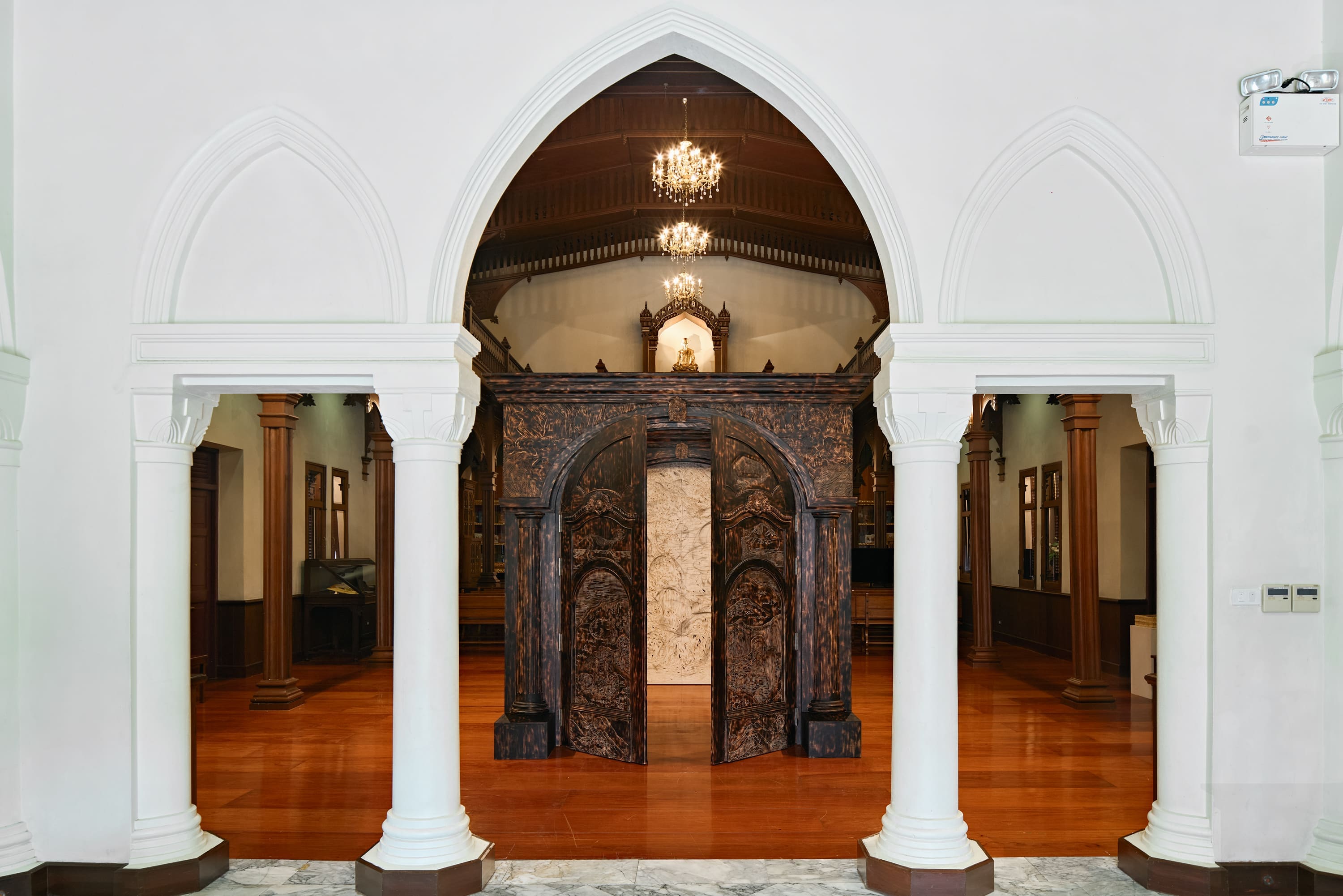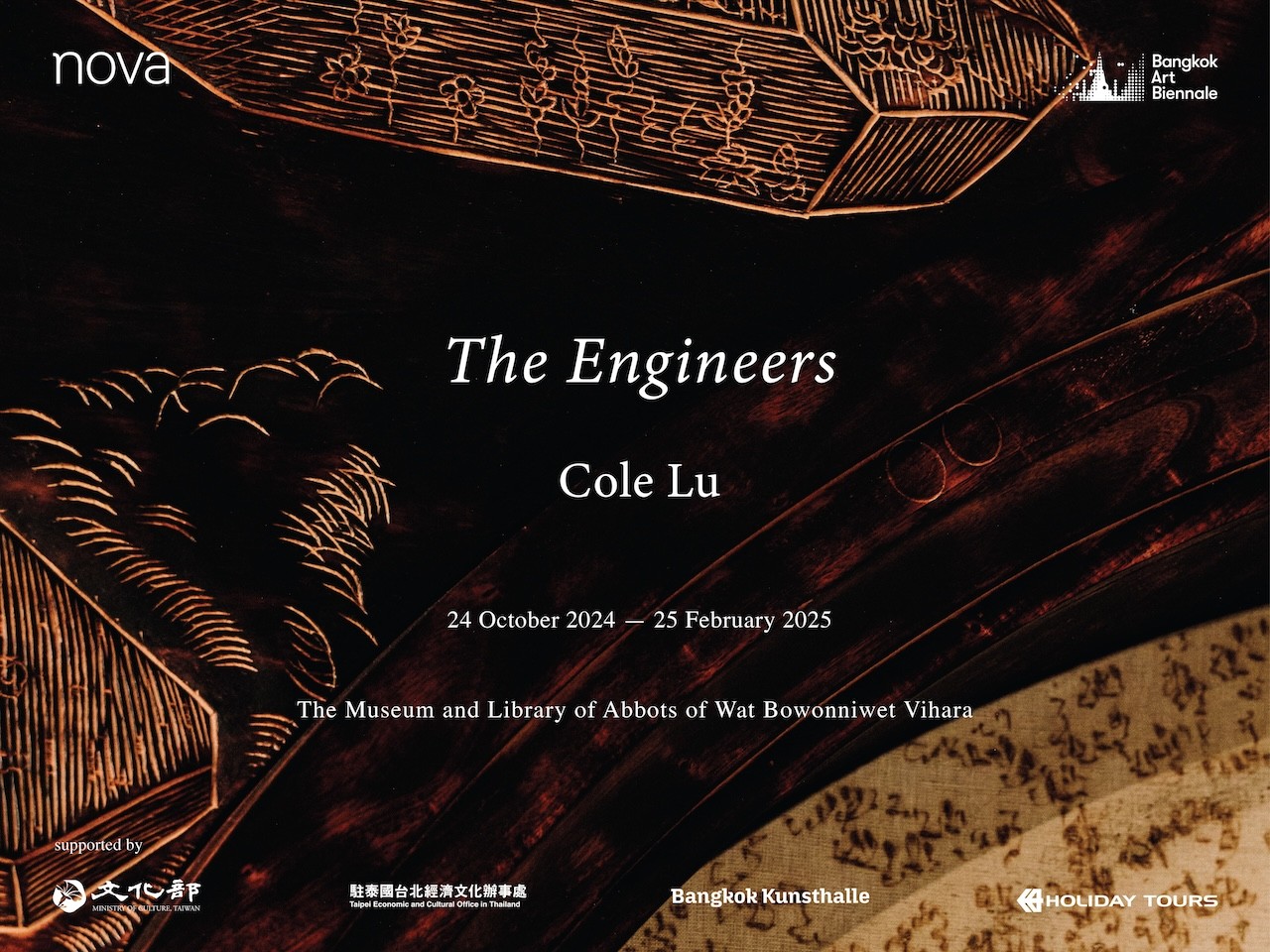Nova Contemporary is pleased to announce The Engineers, a solo exhibition by Cole Lu as part of the Bangkok Art Biennale (BAB2024): Nurture Gaia.
The exhibition has been extended until March 30, 2025. Please note: starting from February 25, the venue will only be open on Saturdays and Sundays.

The Engineers is a site-specific installation at The Museum and Library of Abbots of Wat Bowonniwet Vihara, a first-class royal temple complex built in the early nineteenth century. Combining Thai, Chinese, Khmer, and European influences, the temple is home to the first Buddhist educational institution and is also the ordination site for many Chakri kings and royal family members. The Gothic-style Museum and Library serves as a significant repository of Thai Buddhist knowledge, housing countless religious artifacts and monastic utensils associated with the four Supreme Patriarchs who resided at the temple.

The title of the exhibition references Lu’s questioning of engineers as architects of humanity, and the myth-making origins of our social hierarchy. Through two large-scale, free-standing doors burned from Neem (Sao Dao) wood and linen, Lu explores time and time travel, historical texts, religious scriptures, mythologies, and ancient artifacts. Using fire to mark his gestures, he also returns to a possible origin of storytelling before social construction, delving into issues of history, memory, and home. The paired doors echo the space’s original entries, acting as portals into an infinite Universal cycle between birth and death.

Audience Reflections: Sharing Perspectives.
by Pratabchai (IG: non_pit_naja)
At first glance, the two doors may appear strikingly unusual. Perhaps it’s their placement, the contrasting designs, or the intense coloration that obscures the neem wood beneath. Yet, amid this initial oddity, a closer 20-second examination reveals a harmony that seamlessly blends with the space, evoking a captivating allure. This impression comes before any attempt to decipher the meaning or purpose behind the artwork.
This is the work of Taiwanese artist Cole Lu, renowned for incorporating fire into his creations, a distinctive trademark. This explains the intense hue of the neem wood doors, which feature carvings depicting natural elements—leaning towards "natural disasters"—and skeletal forms reminiscent of dinosaurs. Lu’s use of fire extends beyond the wood, as seen on the linen fabric replacing one door panel. The fabric bears designs of animals and spirit houses, all etched with high-temperature steel, used as a brush. The linen is marked with burn traces and coated with charcoal dust, creating a unique aesthetic.
Interpreting the piece, I see multiple meanings depending on one's "position of view." One perspective involves looking from the wooden door to the linen door, symbolizing the journey from birth into nature and life, followed by death, leaving behind the physical body to transition into an inaccessible space for the corporeal. Conversely, viewing from the linen door suggests a soul crossing into existence, gaining a physical form to step through the wooden door and "live" anew.
From a spiritual lens, standing between the doors evokes renunciation. The wooden door represents relinquishing physical life—death—while passing through the linen door requires abandoning "everything," akin to reaching nirvana and escaping the cycle of rebirth. For ordinary individuals, this means oscillating between the wooden door, trapped in the cycle of samsara, until enlightenment allows passage through the linen door.
This brings us to the crucial theme of "time." Walking between the doors can symbolize traversing time, observing birth, growth, and death, which underscores the value of life. Whether or not an afterlife exists, the present moment should be cherished and utilized to its fullest.
"
"
... reminds me of Pascal’s Wager: potential outcomes of life’s end and prompting us to consider how to live meaningfully
Finally, "The Engineers" reminds me of Pascal’s Wager, illustrating the potential outcomes of life’s end and prompting us to consider how to live meaningfully. The hope of an afterlife might seem appealing to those facing dull, uninspired lives. Yet without guarantees, the best course is to make the most of the here and now, seeking opportunities, experiences, knowledge, and happiness. This ensures no regret in having "missed life" as humans.
information provided by event organizer






